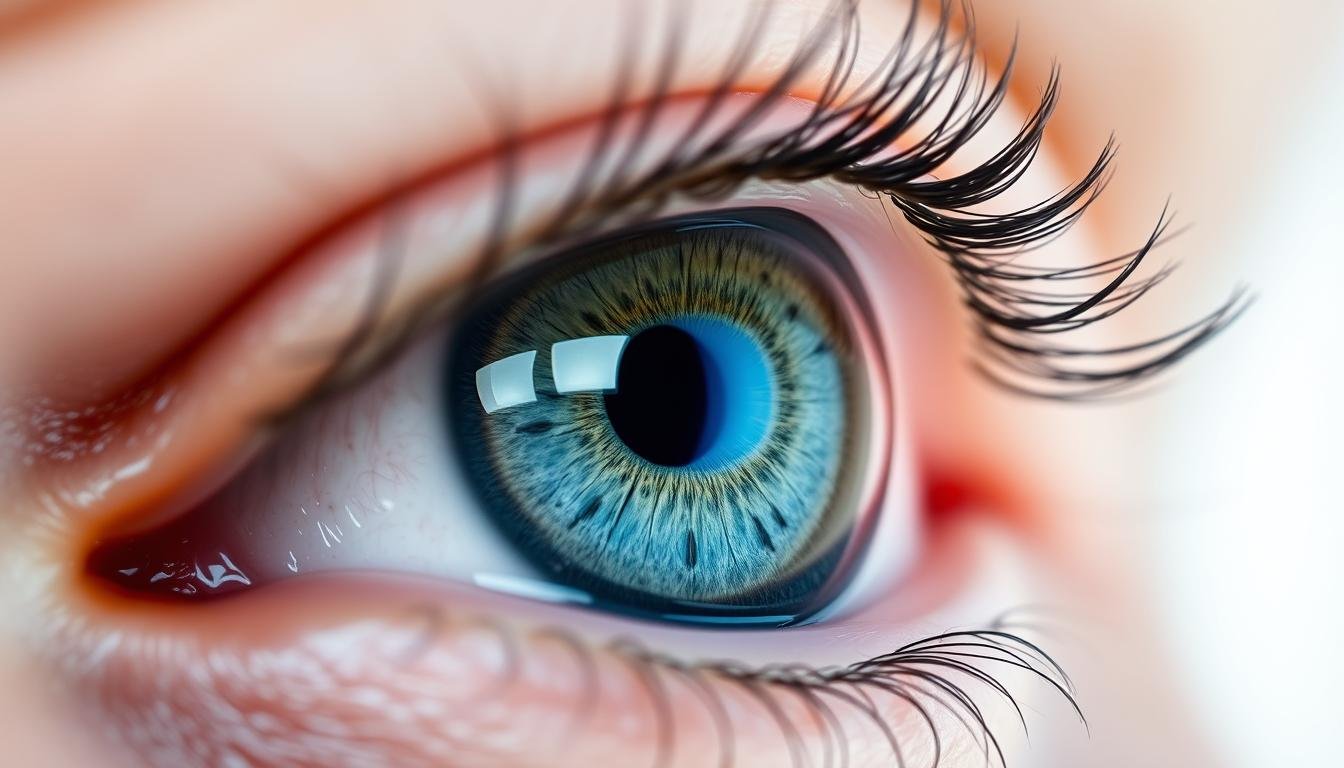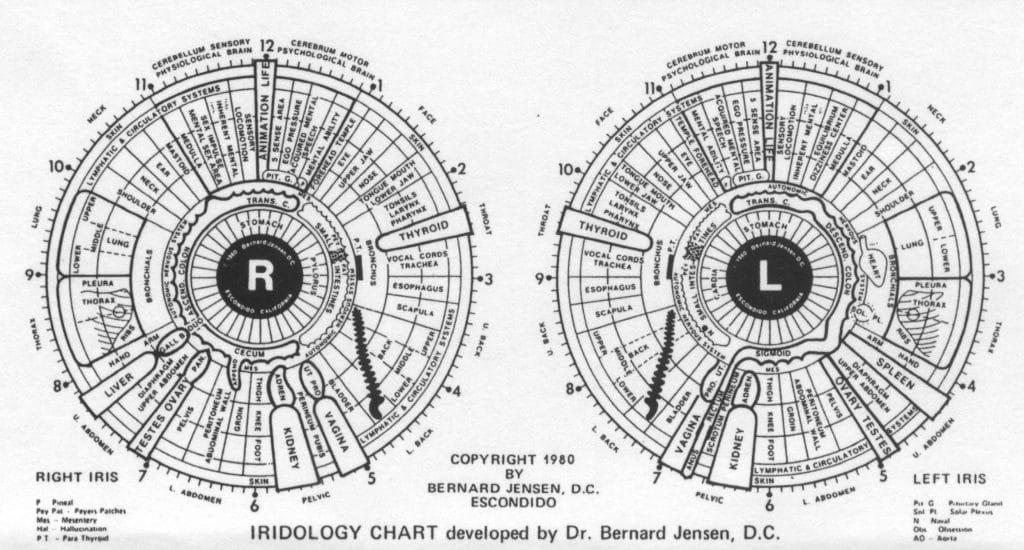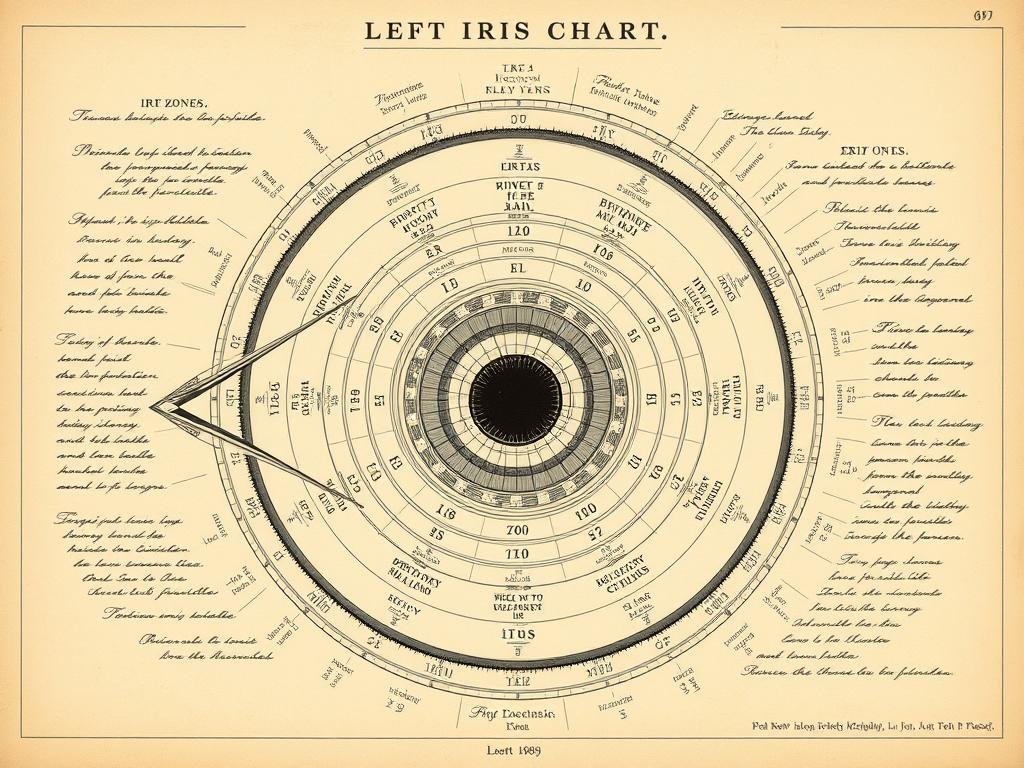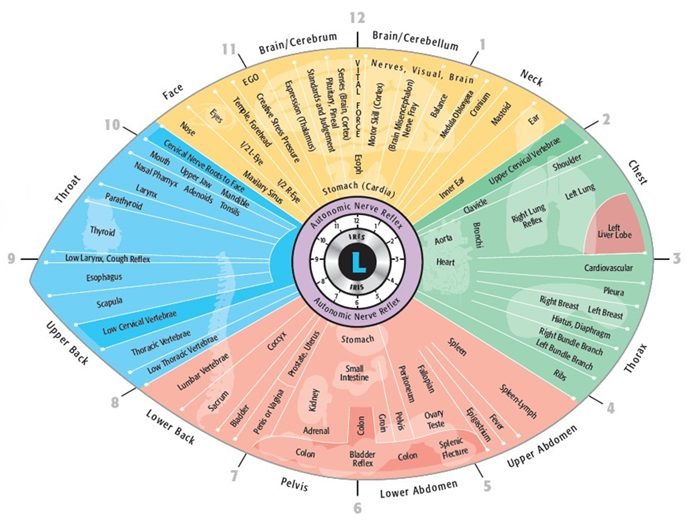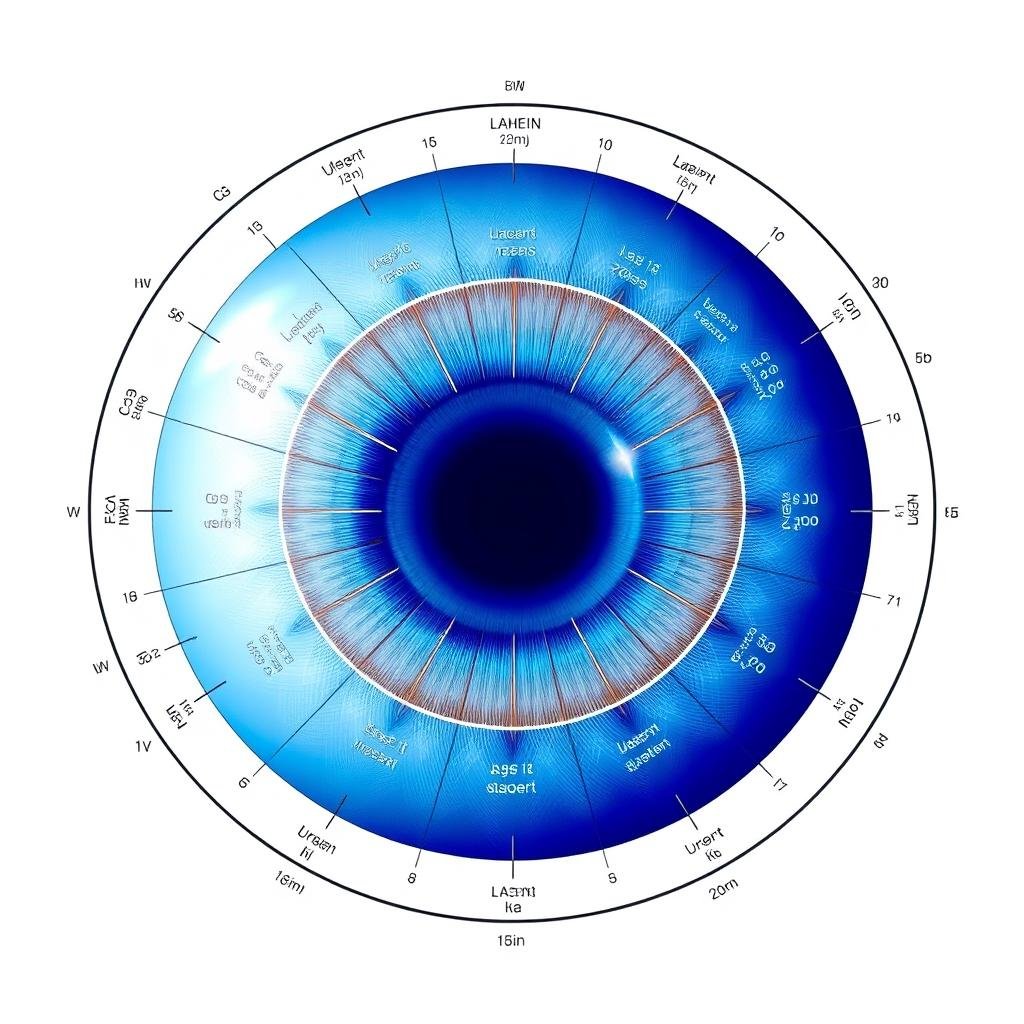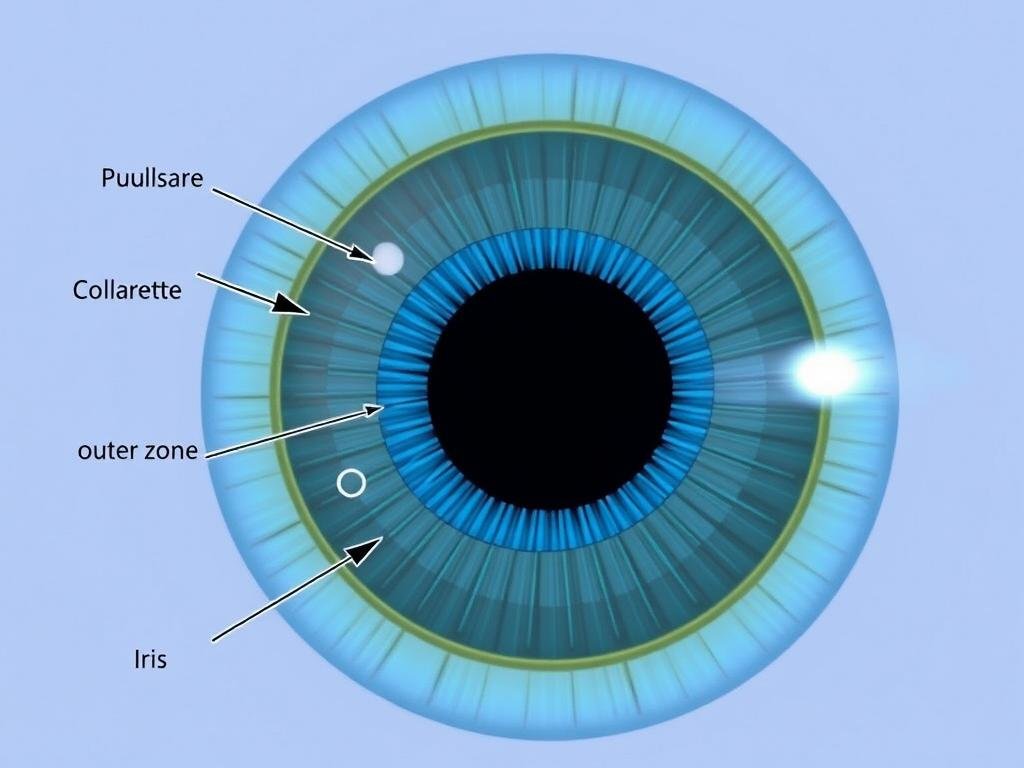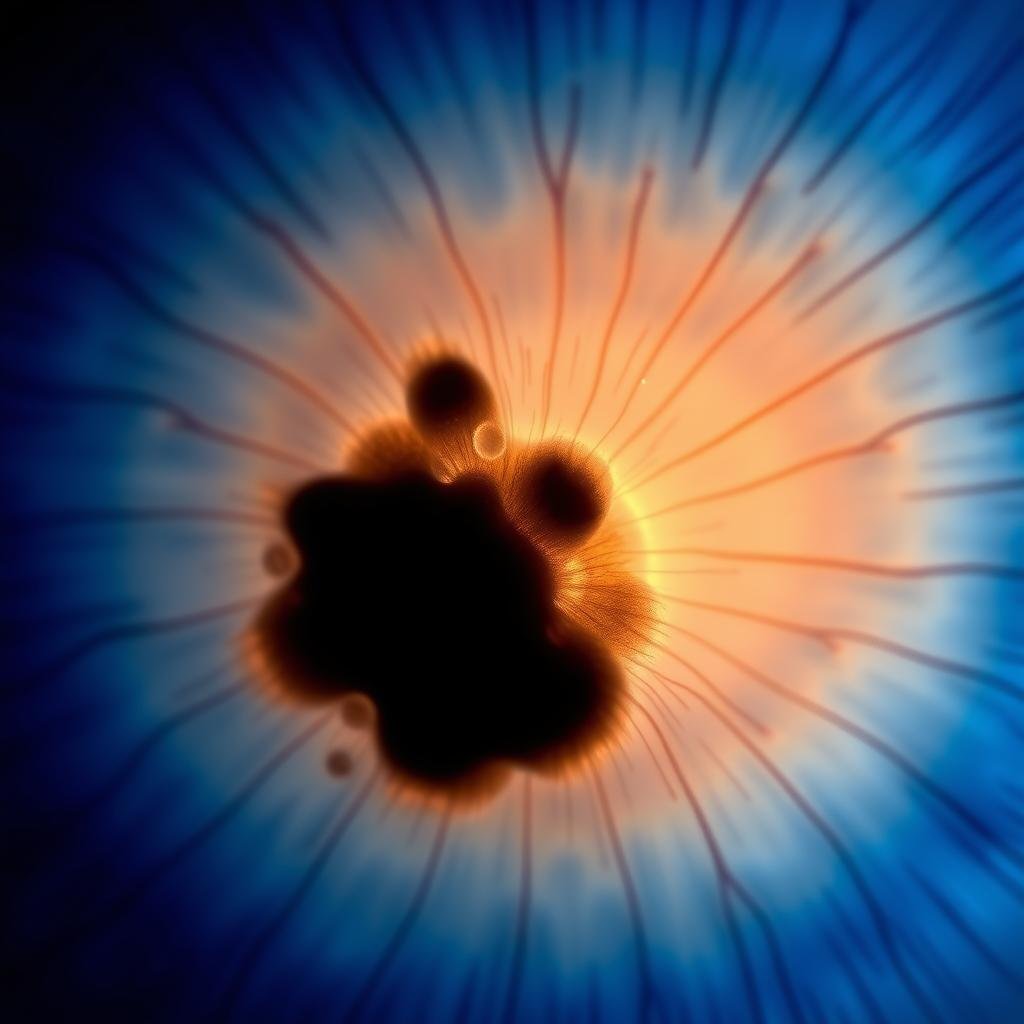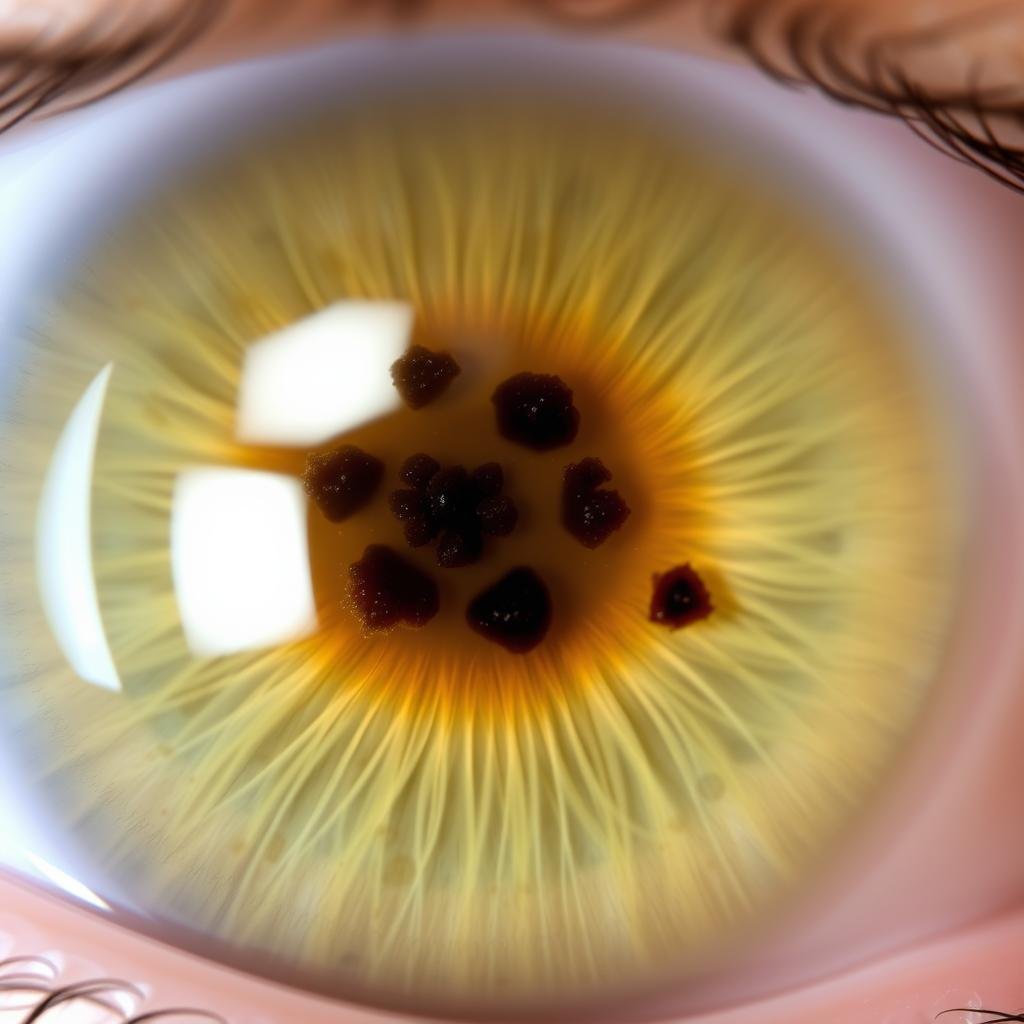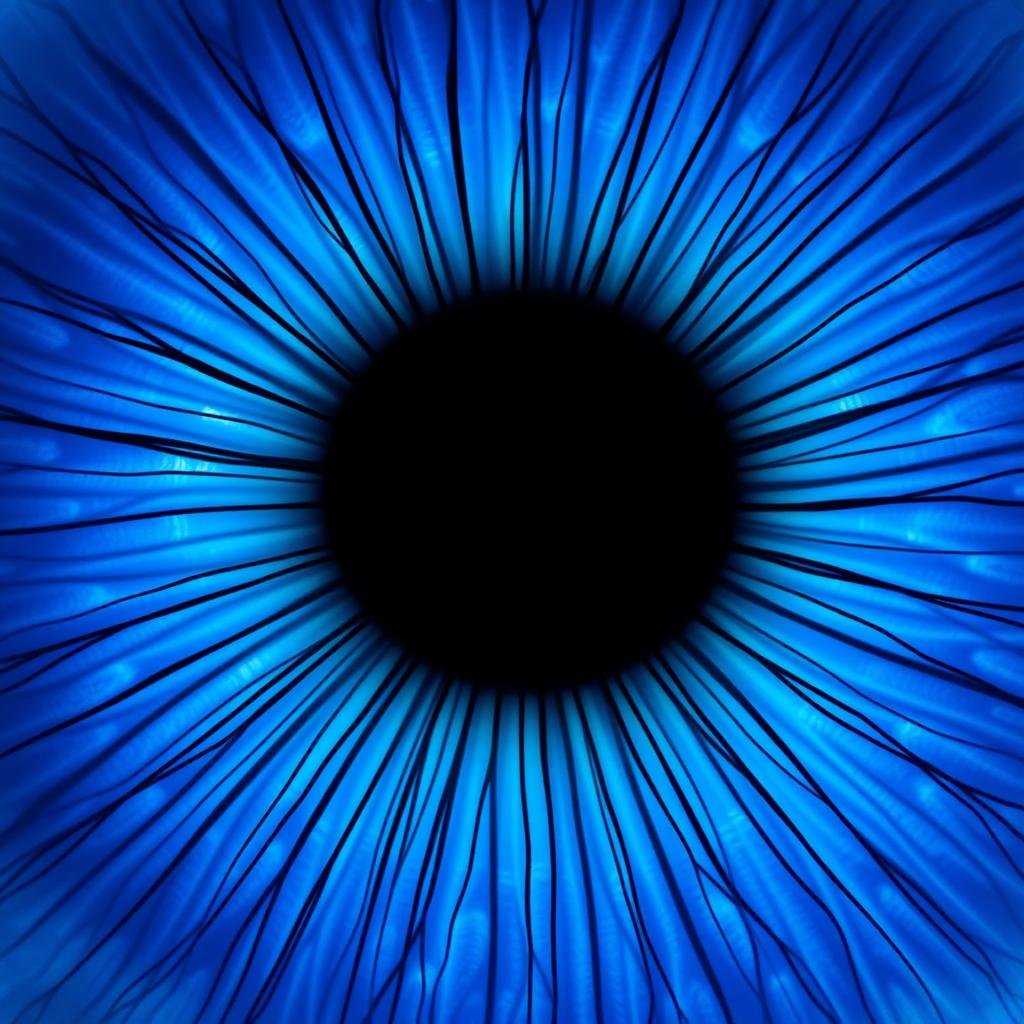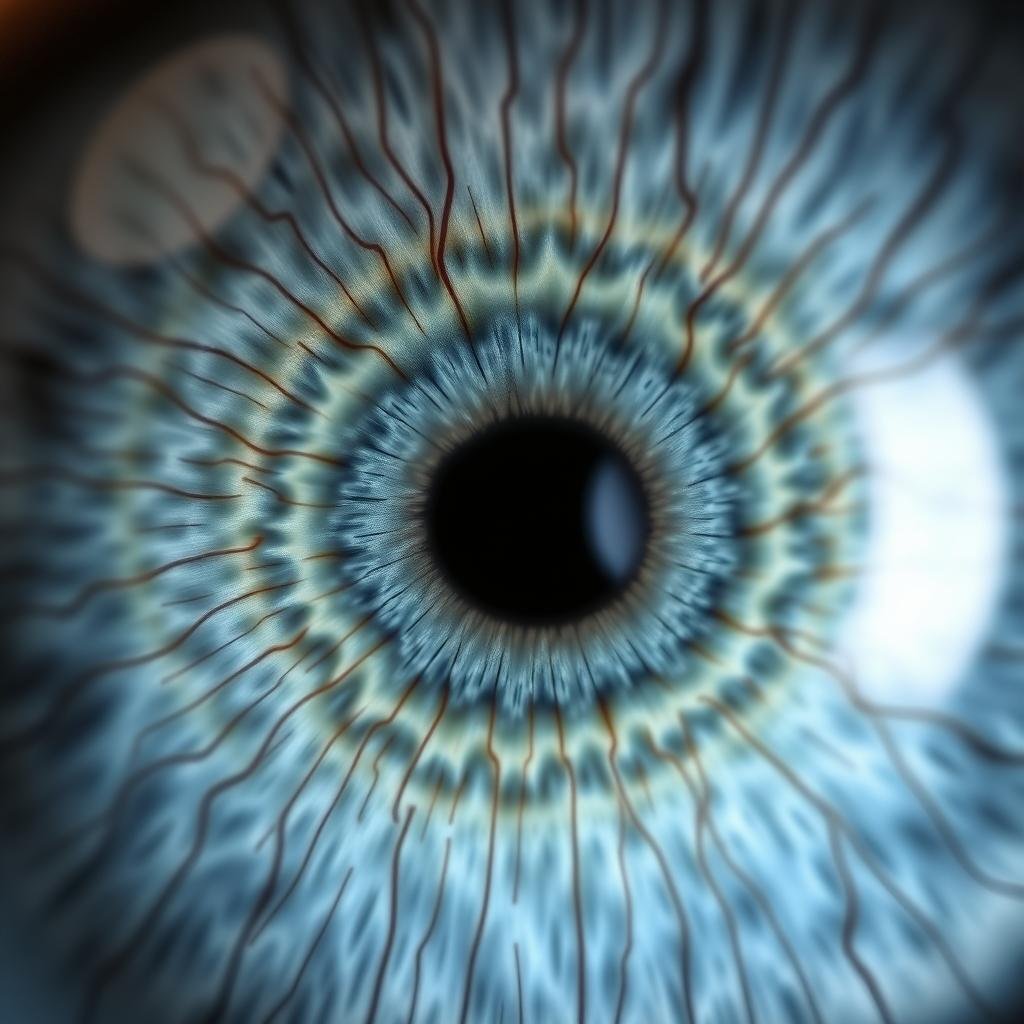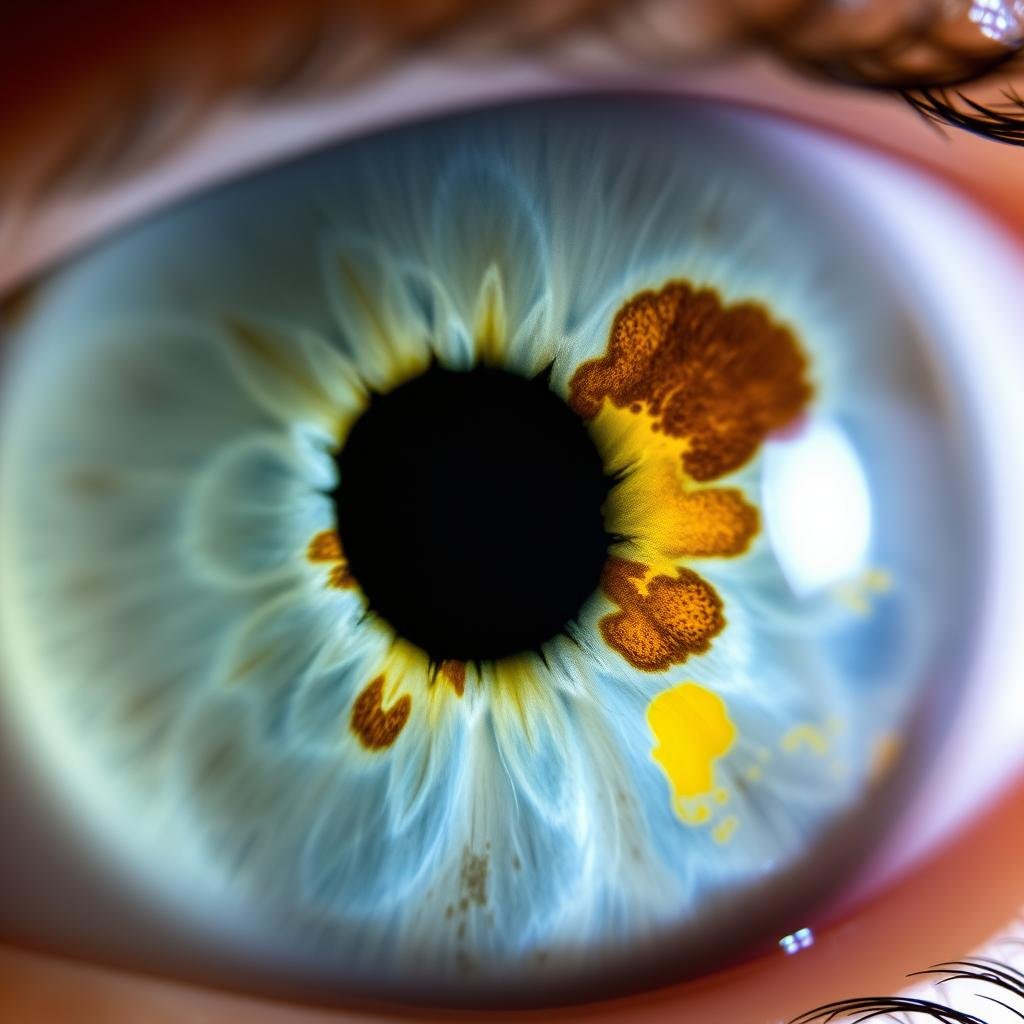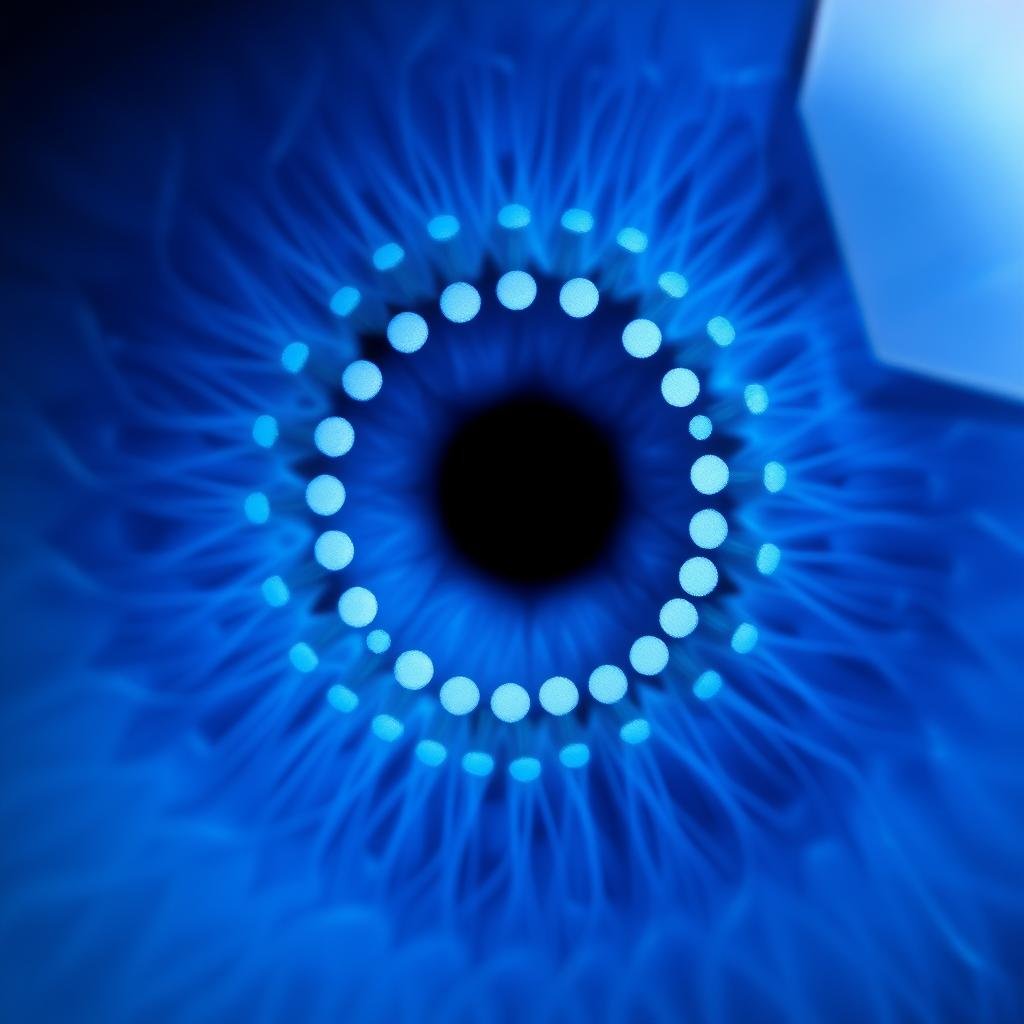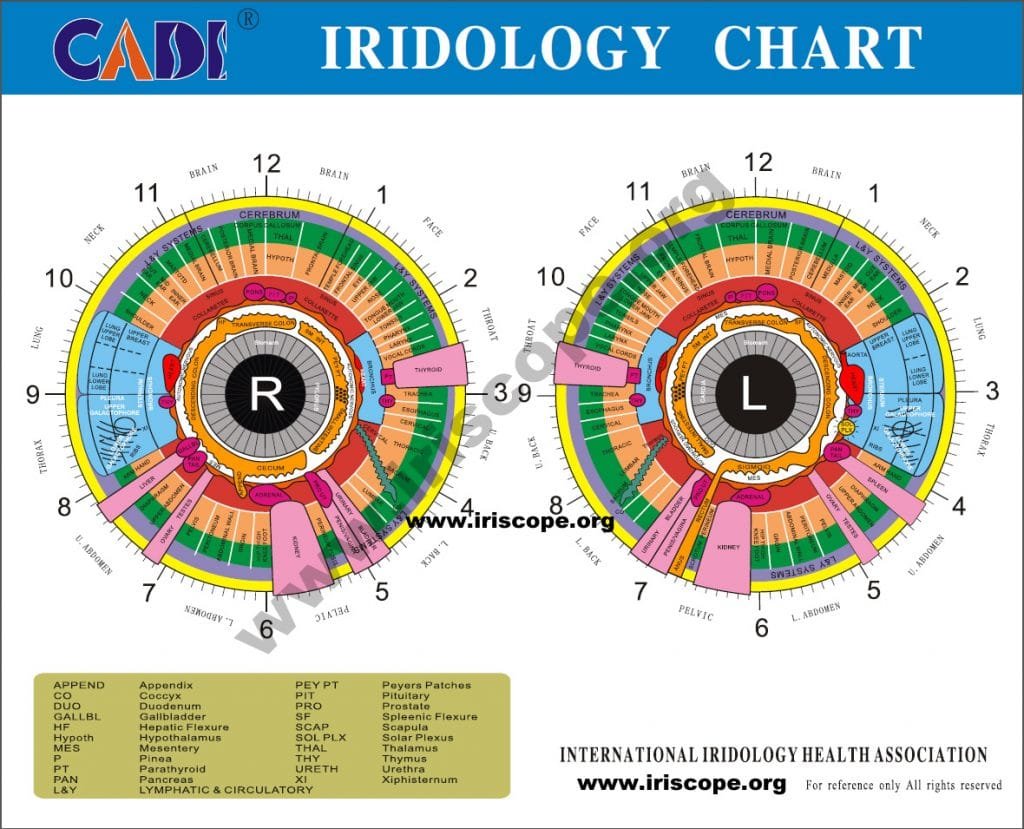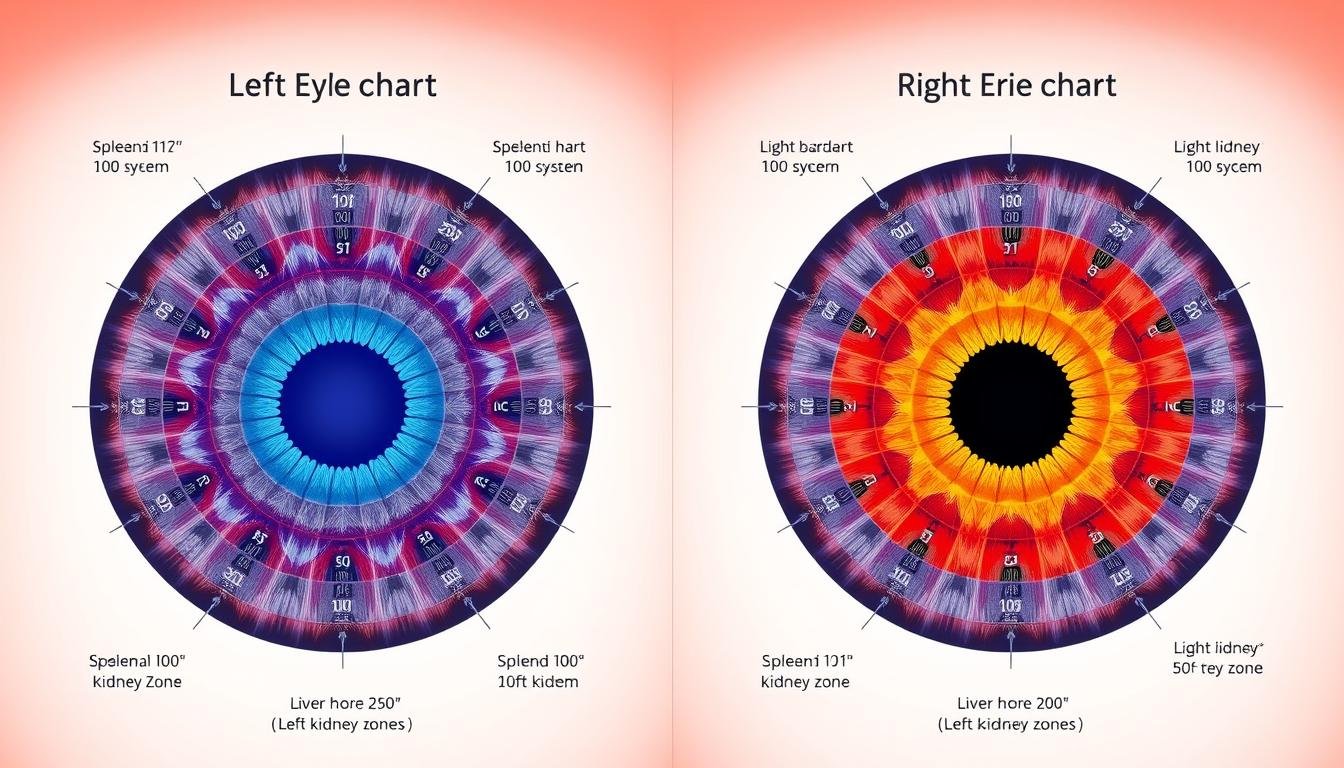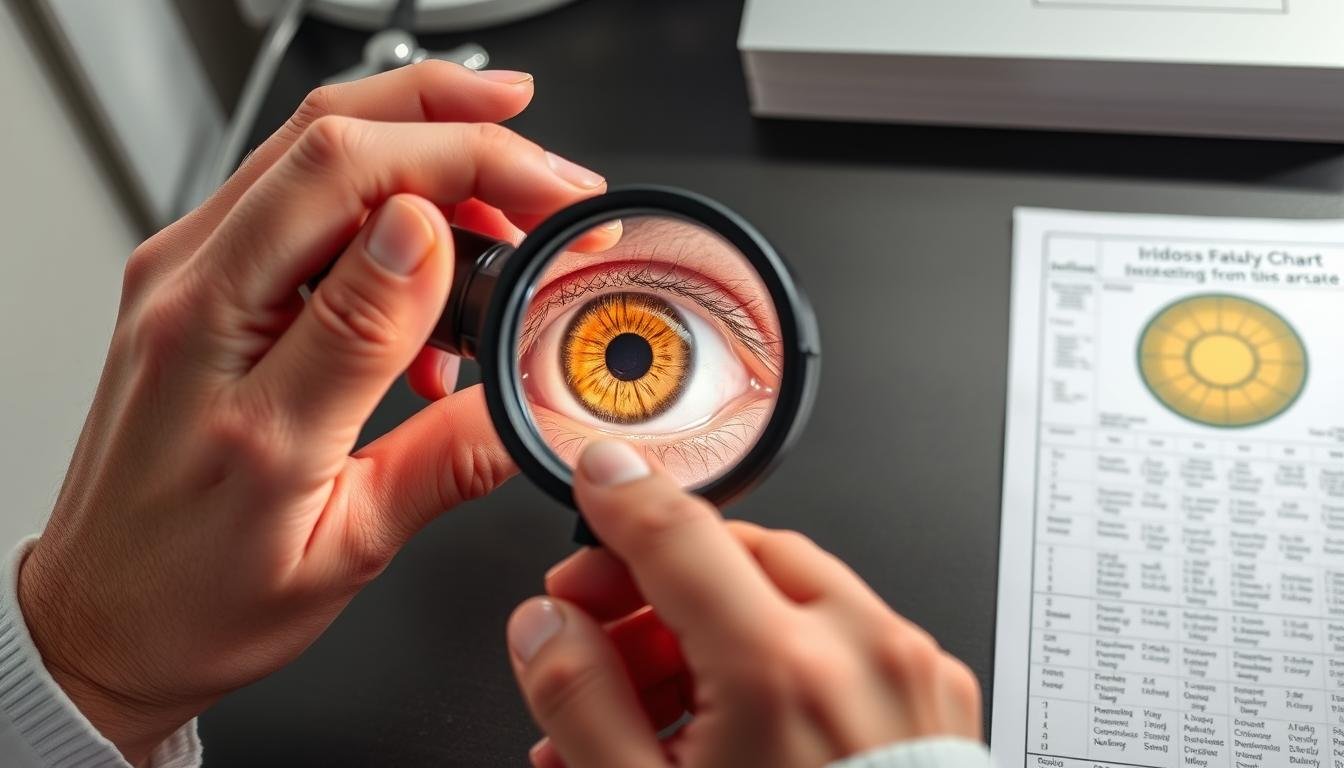نمودار ایریدولوژی چشم چپ-عنبیه انسان حاوی الگوهای پیچیده ای است که برای هر فرد منحصر به فرد است ، دقیقاً مانند اثر انگشت. Iridology ، مطالعه این الگوهای ، نشان می دهد که علائم و رنگهای خاص در IRIS می تواند اطلاعات مربوط به سلامت شخص را نشان دهد. به ویژه اعتقاد بر این است که چشم چپ با سمت چپ بدن و برخی از اندام های داخلی مطابقت دارد. این راهنمای جامع شما را از طریق درک و تفسیر a پیاده روی می کند نمودار ایریدولوژی چشم چپ، اهمیت تاریخی آن و کاربردهای عملی در ارزیابی سلامت جامع.
ریشه های تاریخی Iridology
نمودار ایریدولوژی چشم چپ-iridology دارای تاریخ غنی است که قدمت هزاران سال دارد. اعتقاد بر این است که تمدنهای باستان در مصر ، چین و هند اشکال اولیه تجزیه و تحلیل عنبیه را انجام داده اند. با این حال ، ایریدولوژی مدرن همانطور که می دانیم امروز در قرن نوزدهم شکل گرفت.
مهمترین سهم از پزشک مجارستانی Ignatz von Peczely در دهه 1860 به دست آمد. در کودکی ، فون Peczely بعد از اینکه پرنده دچار یک پای شکسته شد ، متوجه یک خط تیره در عنبیه جغد شد. این مشاهدات باعث کنجکاوی وی شد و او را به مطالعه ارتباط بین علائم عنبیه و شرایط جسمی سوق داد. در سال 1881 ، او یافته های خود را منتشر کرد و اولین نمودار جامع عنبیه را ایجاد کرد.
نمودار ایریدولوژی چپ ، هومیوپات سوئدی نیلز لیلجکیستی در کار فون پکزلی گسترش یافت و اشاره کرد که پس از مصرف دارو ، تغییراتی در عنبیه خودش دارد. در اوایل قرن بیستم ، ایریدولوژی در اروپا محبوبیت پیدا کرد و سرانجام به آمریکای شمالی گسترش یافت ، جایی که پزشکان مانند برنارد جنسن در دهه 50 نمودارهای ایریدولوژی را توسعه و استاندارد کردند.


تجزیه مناطق نمودار Iridology چشم چپ
نمودار ایریدولوژی چشم چپ ، عنبیه را به تقریباً 60 منطقه تقسیم می کند که هر کدام مربوط به سیستم ها و اندام های مختلف بدن است. بر خلاف چشم راست ، که در درجه اول نشان دهنده سمت راست بدن است ، چشم چپ با سمت چپ و سیستم های اندام خاص همراه است.

نمودار ایریدولوژی چشم چپ - نمودار ایریدولوژی - چشم چپ
چشم چپ بازتاب دادن سمت چپ بدن
| موقعیت ساعت (چشم چپ) | ارگان/سیستم مطابقت دارد | جزئیات |
|---|
| ساعت 1 - ساعت 2 | گردن چپ
| مطابق با اندامهای تولید مثل راست ، شامل رحم ، تخمدان (زن) یا بیضه (مرد) است. |
| ساعت 2 - ساعت 3 | ریه سمت چپ | مفاصل راست سلامت ، شامل زانوها ، باسن ، آرنج و شانه ها است. |
| ساعت 3 - ساعت 4 | قفسه سینه چپ | مربوط به ستون فقرات ، سلامت ستون فقرات ، تراز و انعطاف پذیری در سمت راست است. |
| ساعت 4 - ساعت 5 | شکم فوقانی چپ
| سیستم ادرار مثانه و سمت چپ. |
| ساعت 5 - ساعت 6 | شکم پایین چپ
| RingPresents راست روده بزرگ ، روده کوچک و سلامت گوارشی. |
| ساعت 6 - ساعت 7 | لگن چپ
| حلقه های حلقه ای راست ، تمرکز بر روی تصفیه ، سم زدایی و تعادل سیال. |
| ساعت 7 - ساعت 8 | کمر چپ
| حلقه های معده و دستگاه گوارش در سمت راست. |
| ساعت 8 - ساعت 9 | پشتی چپ
| مربوط به کبد سمت راست ، سم زدایی مسئول و تولید صفرا است. |
| ساعت 9 - ساعت 10 | گلو چپ
| Ringpresents قلب سمت راست ، بر سلامت قلبی عروقی و گردش خون تأثیر می گذارد. |
| ساعت 10 - ساعت 11 | صورت چپ | Ringflects راست ریه ، سلامت تنفسی و عملکرد Brea. |
| ساعت 11 - ساعت 12 | مغزی | مربوط به مغز نیمکره راست ، سلامت روان و عملکردهای شناختی است. |
| ساعت 12 - ساعت 1 | مغزی | مربوط به مغز نیمکره راست ، سلامت روان و عملکردهای شناختی است. |
مناطق اصلی عنبیه چشم چپ
مناطق فوقانی (موقعیت 12 ساعت)
- گردش مغز و مغزی
- غده هیپوفیز
- سمت چپ سر و سینوس ها
- توابع گوش چپ و شنوایی
ربع فوقانی بالا (ساعت 1-3)
- قلب
- ریه و برونشی چپ
- تیروئید و پاراتیروئید
- بافت پستان چپ
ربع پایین راست (ساعت 4-6)
مناطق پایین (موقعیت 6 ساعت)
- اندامهای تولید مثل
- مثانه
- روده های پایین
- پای چپ و پا
ربع چپ پایین (ساعت 7-9)
- روده بزرگ
- روده بزرگ
- لگن و لگن چپ
- سیستم لنفاوی
چهارگوش سمت چپ فوقانی (ساعت 10-12)
- شانه و بازوی چپ
- سمت چپ گردن
- فک چپ و دندان
- سمت چپ ستون فقرات

آناتومی دایره ای عنبیه
فراتر از مناطق جهت دار ، عنبیه نیز در محافل متحد المرکز از دانش آموز به بیرون مورد تجزیه و تحلیل قرار می گیرد:
- منطقه شاگرد (حلقه داخلی) – سیستم هضم و عملکردهای بدن هسته را نشان می دهد
- Collarette (حلقه میانی) – سیستم گردش خون و فرآیندهای متابولیکی را نشان می دهد
- منطقه مژگانی (حلقه بیرونی) – منعکس کننده سیستم پوستی ، اندامها و اسکلتی عضلانی است
- Iris Edge (بیرونی ترین مرز) – همراه با پوست ، سیستم های حذف و لنفاتیک

تفسیر علائم مشترک در عنبیه چپ
نمودار شناسان نمودار ایریدولوژی چپ ، علائم ، الگوهای و تغییر رنگ در عنبیه را برای ارزیابی شرایط بالقوه سلامت ، تجزیه و تحلیل می کنند. در اینجا رایج ترین علائم موجود در عنبیه چپ و تفسیرهای سنتی آنها وجود دارد:
Lacunae (Crypts)

اینها به عنوان دهانه های تاریک و شبیه به گودال در الیاف عنبیه ظاهر می شوند. در ایریدولوژی ، آنها ممکن است نشان دهنده آسیب ، التهاب یا عدم فعالیت در اندام مربوطه باشد. Lacunae عمیق تر شرایط مزمن تر یا شدیدتری را نشان می دهد.
لکه های رنگدانه

لکه های تاریک یا تجمع در عنبیه ممکن است نشانگر رسوب سم یا مناطقی از احتقان باشد. مکان آنها در نمودار با اندام های خاص مطابقت دارد ، در حالی که رنگ و تراکم آنها ممکن است شدت شرایط را نشان دهد.
شعاع خورشیدی

این خطوط مستقیم به نظر می رسد که به بیرون از دانش آموز تابش می کنند و شبیه سخنان روی چرخ هستند. آنها ممکن است نشانگر تحریک ، التهاب یا شرایط سمی بر اندامها یا سیستم های مربوطه باشد.
حلقه های عصبی

اینها به عنوان حلقه های دایره ای یا قوس در عنبیه ظاهر می شوند. در ایریدولوژی ، آنها ممکن است نشان دهنده تنش عصبی ، استرس یا اضطراب باشد. حلقه های عصبی چندگانه یا برجسته ممکن است استرس مزمن بر سیستم عصبی تأثیر بگذارد.
تغییر رنگ

تغییرات در رنگ عنبیه در مناطق خاص ممکن است نشانگر عدم تعادل شیمیایی ، التهاب یا فرآیندهای بهبودی باشد. مناطق سفید ممکن است التهاب را نشان دهند ، در حالی که مناطق تیره تر می توانند تجمع سم را نشان دهند.
تسبیح لنفاوی

این به عنوان یک سری نقاط سفید که حلقه ای در منطقه بیرونی عنبیه تشکیل می دهند ، ظاهر می شود. در ایریدولوژی ، ممکن است نشان دهنده احتقان سیستم لنفاوی یا چالش های سیستم ایمنی بدن باشد.
نمودارهای ایریدولوژی چشم چپ در مقابل راست: تفاوتهای کلیدی
در حالی که هر دو چشم اطلاعات ارزشمندی را در ایریدولوژی ارائه می دهند ، اما جنبه های مختلف بدن را نشان می دهند. درک تمایز بین نمودارهای چپ و راست برای تفسیر دقیق بسیار مهم است.
| ویژگی | نمودار چشم چپ | نمودار چشم راست |
| نمای بدن | در درجه اول سمت چپ بدن | در درجه اول سمت راست بدن |
| تأکید اندام | طحال ، معده ، قلب ، کلیه چپ | کبد ، کیسه صفرا ، کلیه راست |
| نیمکره مغز | مغز راست (خلاقیت ، شهود) | مغز چپ (منطق ، تجزیه و تحلیل) |
| نوع انرژی | انرژی یین (زنانه ، گیرنده) | انرژی یانگ (مردانه ، پروژکتور) |
| جنبه های عاطفی | پردازش عاطفی ، احساسات | تفکر منطقی ، تصمیم گیری |



هنگام انجام یک تجزیه و تحلیل کامل ایریدولوژی ، پزشکان هر دو چشم را بررسی می کنند تا تصویری جامع از سلامت فرد بدست آورند. اختلاف بین چشم ممکن است نشانگر عدم تعادل یا شرایط نامتقارن باشد که بیش از طرف دیگر یک طرف بدن را تحت تأثیر قرار می دهد.
راهنمای گام به گام برای خواندن نمودار ایریدولوژی چشم چپ
یادگیری خواندن نمودار ایریدولوژی چشم چپ نیاز به تمرین و توجه به جزئیات دارد. این مراحل را برای یک رویکرد سیستماتیک به تجزیه و تحلیل عنبیه دنبال کنید:
- روشنایی و بزرگنمایی مناسب را آماده کنیداز نور روز طبیعی یا منبع نور سفید روشن استفاده کنید. یک لیوان بزرگنمایی حداقل 5 برابر قدرت یا یک ایریسکوپ تخصصی برای مشاهده دقیق توصیه می شود.
- موضوع را به درستی قرار دهیداز فرد بخواهید که مستقیم با چشمان کاملاً باز نگاه کند. پلک های بالا و پایین را به آرامی بکشید تا عنبیه را به طور کامل در معرض دید قرار دهد.
- نوع عنبیه را شناسایی کنیدتعیین کنید که آیا عنبیه آبی (لنفاوی) ، قهوه ای (هماتوژن) یا مخلوط (صفراوی) است زیرا این امر بر تفسیر مارک ها تأثیر می گذارد.
- نمودار را به درستی جهت دهیدتراز کردن نمودار ایریدولوژی چشم چپ با آیریس چپ سوژه ، اطمینان از موقعیت 12 ساعت در نمودار با بالای آیریس مطابقت دارد.
- یکپارچگی کلی عنبیه را بررسی کنیدقبل از تمرکز روی علائم خاص ، به دنبال تقارن ، قوام رنگ و وضعیت الیاف عنبیه باشید.
- علائم خاص را به سیستم های بدن نقشه کنیدتوجه داشته باشید به موقعیت هرگونه مارک و برای شناسایی سیستم یا اندام بدن مربوطه به نمودار مراجعه کنید.
- عمق و شدت علائم را ارزیابی کنیدبرای تعیین شدت احتمالی شرایط ، شدت ، اندازه و رنگ مارک ها را ارزیابی کنید.

دیدگاه های علمی در مورد اعتبار Iridology
در حالی که ایریدولوژی بسیاری از پزشکان و پیروان اختصاصی دارد ، درک دیدگاه جامعه علمی در مورد این عمل مهم است.
استدلال های پشتیبان
- عنبیه حاوی هزاران انتهای عصبی است که از طریق عصب بینایی به مغز متصل می شوند
- برخی از پزشکان از همبستگی مداوم بین علائم عنبیه و شرایط بهداشتی شناخته شده گزارش می دهند
- شواهد حکایتی از مشتریانی که در خوانش های ایریدولوژی ارزش پیدا کرده اند
- طبیعت غیر تهاجمی آن را به یک ابزار ارزیابی مکمل جذاب تبدیل می کند
چشم اندازهای بحرانی
- تحقیقات محدود همکار مورد بررسی از ادعاهای تشخیصی Iridology
- مطالعاتی که نشان می دهد ایریدولوژیست ها نمی توانند به طور مداوم بیماران مبتلا به بیماری های شناخته شده را شناسایی کنند
- الگوهای عنبیه تا حد زیادی توسط ژنتیک تعیین می شود و در طول زندگی پایدار می ماند
- خطر از دست دادن شرایط جدی در صورت استفاده به عنوان یک روش تشخیصی اصلی
یک مطالعه در سال 1999 که در مجله پزشکی جایگزین و مکمل منتشر شده است ، نشان داد که ایریدولوژی در هنگام تشخیص همان بیماران ، توافق نامه کمی بین پزشکان دارد. به همین ترتیب ، یک بررسی سیستماتیک 2000 نتیجه گرفت که “ایریدولوژی با ارزیابی های علمی پشتیبانی نمی شود.”
با این حال ، طرفداران استدلال می کنند که ایریدولوژی باید به عنوان یک ابزار ارزیابی مکمل به جای یک روش تشخیصی تلقی شود. آنها پیشنهاد می کنند که می تواند بینش در مورد نقاط قوت و ضعف قانون اساسی ، به طور بالقوه هدایت اقدامات پیشگیرانه بهداشتی را ارائه دهد.
برنامه های عملی برای پزشکان بهداشت جامع
با وجود شک و تردید علمی ، بسیاری از پزشکان بهداشت جامع ، ایریدولوژی را در عمل خود به عنوان یکی از چندین ابزار ارزیابی قرار می دهند. در اینجا روشهای عملی ایریدولوژی در تنظیمات بهداشتی جامع اعمال می شود:
ارزیابی مشروطیت
ایریدولوژی می تواند به شناسایی نقاط قوت و ضعف ذاتی در سیستم های مختلف بدن کمک کند و به پزشکان این امکان را می دهد تا برنامه های سلامتی شخصی را که از مناطق آسیب پذیر پشتیبانی می کنند ، تهیه کنند.
راهنمایی بهداشت پیشگیرانه
با شناسایی مناطق احتمالی نگرانی قبل از ایجاد علائم ، پزشکان می توانند تغییرات رژیم غذایی ، مکمل ها یا اصلاحات شیوه زندگی را با هدف پیشگیری توصیه کنند.
پیگیری پیشرفت
برخی از پزشکان از عکاسی عنبیه پی در پی برای نظارت بر تغییرات در طول زمان استفاده می کنند ، که به طور بالقوه نشان دهنده بهبود یا وخیم شدن در سیستم های خاص بدن است.
آموزش مشتری
Iridology ابزاری بصری برای کمک به مشتریان در درک الگوهای بهداشتی خود ، به طور بالقوه افزایش در تعامل با پروتکل های بهداشتی توصیه شده فراهم می کند.
ارزیابی مکمل
هنگامی که در کنار سایر روش های ارزیابی مانند تاریخچه سلامت ، معاینه فیزیکی و آزمایش آزمایشگاهی استفاده می شود ، ایریدولوژی ممکن است بینش های دیگری را ارائه دهد.
ارتباطات عاطفی و جسمی
برخی از پزشکان برای کشف ارتباط بین الگوهای عاطفی و علائم جسمی ، از یک رویکرد ذهن و بدن به سلامتی استفاده می کنند.

نتیجه گیری: مکان ایریدولوژی در سلامت جامع
نمودار ایریدولوژی چشم چپ نشان دهنده تقاطع جذاب از خرد باستان و شیوه های بهداشتی جامع مدرن است. در حالی که اعتبار سنجی علمی محدود است ، بسیاری از پزشکان و مشتری ها در بینش های Iridology می توانند به عنوان بخشی از یک رویکرد جامع برای سلامتی ، ارزش خود را پیدا کنند.
این که آیا شما یک پزشک بهداشتی جامع هستید که به دنبال گسترش ابزارهای ارزیابی خود هستید یا شخصی که علاقه مند به کاوش در رویکردهای جایگزین برای درک بدن شما است ، Iridology یک دیدگاه منحصر به فرد را ارائه می دهد. با درک نمودار ایریدولوژی چشم چپ و کاربردهای آن ، لنز دیگری را به دست می آورید که از طریق آن می توانید روابط پیچیده بین سیستم های مختلف بدن را مشاهده کنید.
مانند هر رویکرد بهداشتی ، حفظ دیدگاه متعادل مهم است. Iridology به بهترین وجه به عنوان یکی از ابزارها در بین بسیاری ، مکمل به جای جایگزینی مراقبت های پزشکی معمولی و تشخیص است. هنگامی که در این زمینه از فکر در این زمینه استفاده می شود ، نمودار ایریدولوژی چشم چپ می تواند یک افزودنی ارزشمند به ابزار بهداشتی جامع باشد.
راهنمای مرجع رایگان Iridology خود را بارگیری کنید
دسترسی فوری به نمودار Iridology چشم چپ قابل چاپ ما با توضیحات منطقه ای دقیق و علائم مشترک. ایده آل برای مبتدیان و پزشکان به طور یکسان.
دانلود نمودار رایگان
عملکرد جامع خود را تقویت کنید
به کارگاه آنلاین ما در مورد تکنیک های پیشرفته Iridology بپیوندید. از پزشکان معتبر بیاموزید و مهارت های ارزشمندی را به ابزار سلامت جامع خود اضافه کنید.
ثبت نام در کارگاه
کتابخانه منابع Iridology خود را تکمیل کنید
مجموعه جامع ما از نمودارهای Iridology ، راهنماهای تفسیر و مطالعات موردی را بارگیری کنید. ایده آل برای دانش آموزان و پزشکان از سلامت جامع.
کیت منابع کامل خود را دریافت کنید

